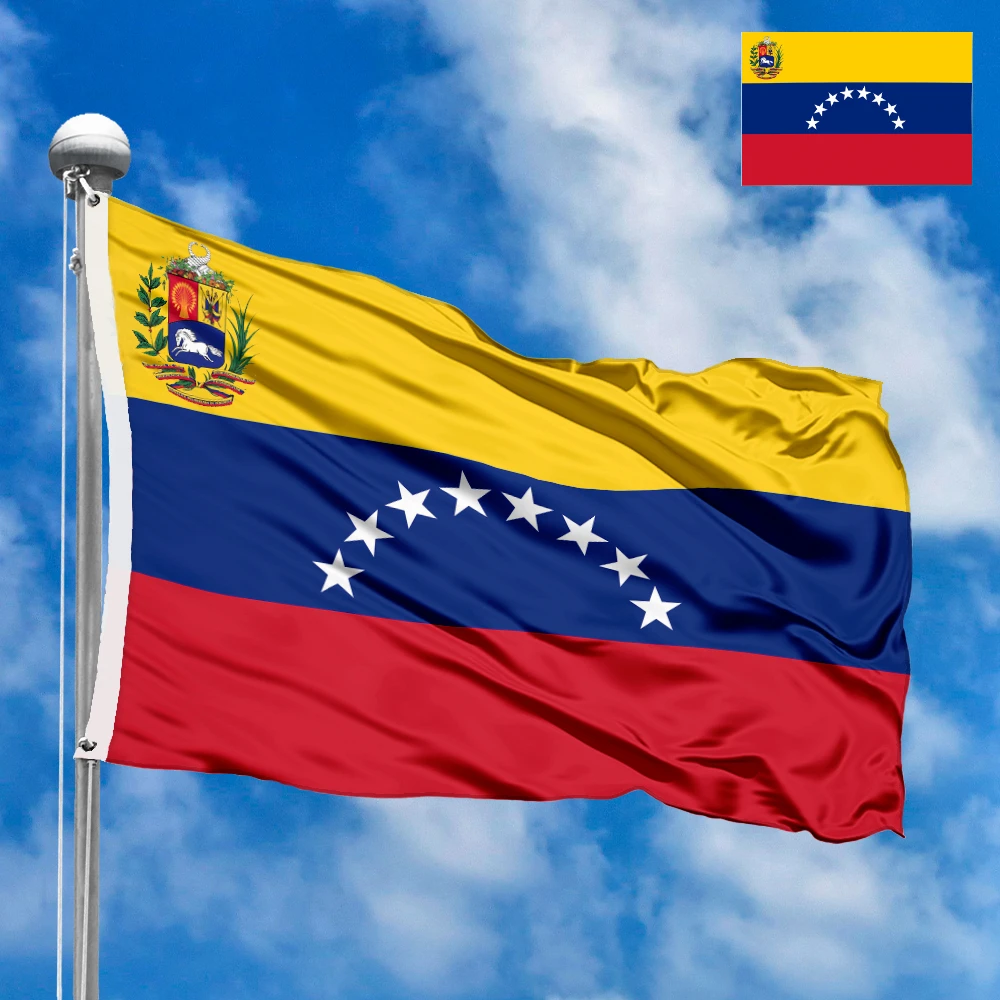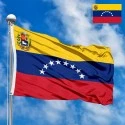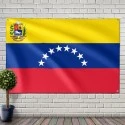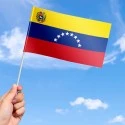The flag of Venezuela is a vibrant and historically rich symbol that reflects the nation's long journey to independence, its natural wealth, and its shared roots with neighboring countries. Consisting of three horizontal stripes and adorned with an arc of eight stars, it is an embodiment of the ideals fought for by revolutionaries and a symbol of the aspirations of the modern state.
A Detailed Look at the Flag's Design and Symbolism
The national flag of Venezuela is a horizontal tricolor of yellow, blue, and red stripes of equal width. This design is a direct legacy of Gran Colombia and is shared with its sister republics, Colombia and Ecuador. However, Venezuela's flag is distinguished by a unique feature: an arc of eight white stars placed in the center of the blue stripe.
Each of the flag's colors carries a profound symbolic meaning:
-
Yellow: Represents the rich resources of the Venezuelan land, including its gold, fertile soil, and vast oil reserves. It is a symbol of the country's wealth and its economic potential. Yellow also stands for the sovereignty and independence of the nation.
-
Blue: Symbolizes the Caribbean Sea, which borders Venezuela's northern coast, and the sky that covers the entire country. It represents the freedom of the oceans and the nation's connection to the sea.
-
Red: Commemorates the blood shed by the patriots who fought and died for the nation's independence from Spanish rule. It is a powerful reminder of the sacrifice and courage of the Venezuelan people in their struggle for liberty.
The most prominent feature of the flag is the arc of eight stars on the blue stripe. These stars represent the provinces that united in the fight for independence. While the flag originally featured seven stars, a politically significant eighth star was added later.
-
Seven Stars: These stars originally represented the seven provinces that signed the Declaration of Independence in 1811: Caracas, Cumaná, Barcelona, Barinas, Margarita, Mérida, and Trujillo.
-
The Eighth Star: The eighth star, representing the province of Guayana, was added by presidential decree in 2006. This was done to honor a decree issued by Simón Bolívar in 1817, who ordered the inclusion of the Guayana star as a symbol of its liberation.
The official state flag also features the Coat of Arms on the canton, which adds another layer of symbolism with its images of a sheaf of wheat, two flags, and a horse.
The History and Creation of the Flag
The history of the Venezuelan flag is intrinsically linked to the broader Latin American independence movement. The design is credited to the revolutionary precursor Francisco de Miranda, who first flew a yellow, blue, and red tricolor over his ship in 1806 during an expedition to liberate Venezuela from Spanish colonial rule. Miranda's design, inspired by the flags of the American and French Revolutions, was later adopted by Gran Colombia.
The modern Venezuelan flag evolved from this original tricolor. After the dissolution of Gran Colombia, Venezuela became an independent republic and continued to use a variant of the tricolor. The original version featured seven stars, symbolizing the original seven provinces. This design remained largely unchanged for a significant period.
In 2006, the flag underwent a major, though controversial, change. President Hugo Chávez issued a decree to add an eighth star, in accordance with Bolívar's 1817 decree. This change was meant to correct a historical omission and to reaffirm the country's revolutionary and socialist heritage. At the same time, a minor change was also made to the Coat of Arms, with the horse facing to the left (heraldic right) to symbolize progress and freedom, a detail that was also a point of national debate. The official adoption date of the current design is March 12, 2006.
Meaning and Significance for Residents
For the people of Venezuela, the flag is a potent symbol of their hard-won freedom and national identity. The vibrant colors represent the bounty of their land and the sacrifice of their ancestors. The stars, especially the addition of the eighth star, are a reminder of the country's complex and often turbulent political history. The flag is proudly displayed during national holidays such as Independence Day (July 5th) and Flag Day (August 3rd), serving as a unifying emblem for a population with diverse political views. It embodies a shared sense of patriotism and resilience, reminding citizens of their collective journey from a colonial past to a sovereign republic. The flag is a visual narrative of their history, representing both the ideals of their founders and the political realities of the modern era.
Interesting Facts
-
The Venezuelan flag, along with the flags of Colombia and Ecuador, all share the same colors and a common origin from the flag of Gran Colombia, designed by Francisco de Miranda. The main differences are the proportional widths of the stripes and the emblems/stars.
-
The arc of eight stars was a point of political controversy, with the 2006 addition of the eighth star being a key policy of President Hugo Chávez. The opposition at the time often flew a version of the flag with only seven stars.
-
The official state flag, used by the government and military, includes the Coat of Arms in the canton, while the civil flag used by private citizens does not.
-
The Coat of Arms was also changed in 2006, with the direction of the white horse altered to face left, a change meant to signify a break from a conservative past and a move towards a more progressive future.
-
The yellow, blue, and red tricolor is one of the oldest flag designs in continuous use in the Americas, with its roots tracing back to the early 19th-century independence movements.
In the demonstration images, full-size flags are shown with proportions of 2:3, and hand-held flags with proportions of 1:2.






 Waving flag
Waving flag
 Sizes:
Sizes:
 Round flag
Round flag
 Sizes:
Sizes:
 Rectangular flag 2:3
Rectangular flag 2:3
 Sizes:
Sizes: